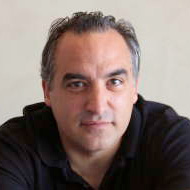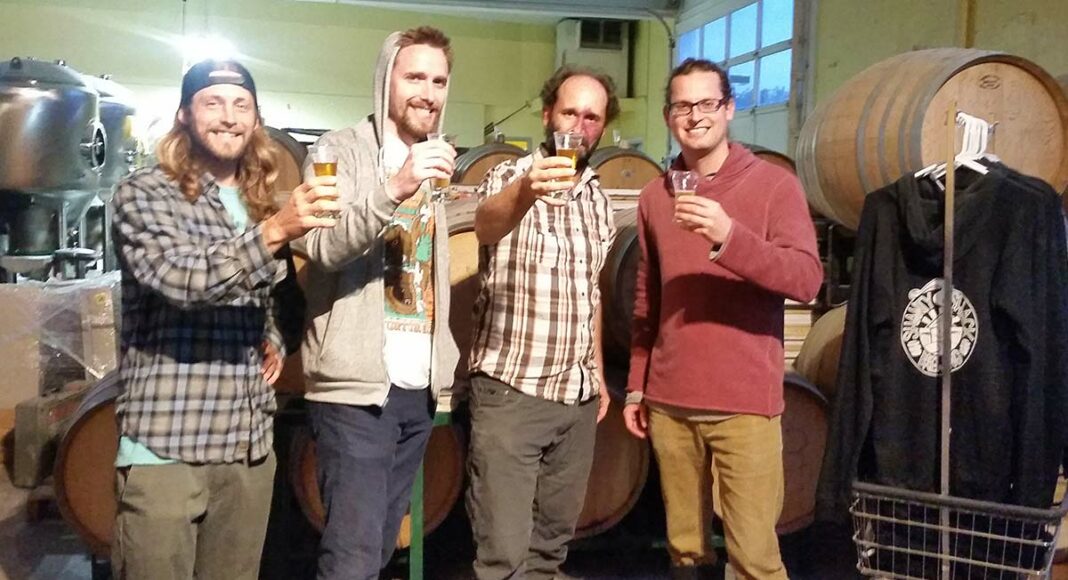EDITOR’S NOTE

Craft beer is a thing in a lot of places now, I realize. But, even so, there’s something special going on in Santa Cruz’s scene, and I think everyone who’s discovered it here can agree on that. The problem with covering it is that it’s growing so fast that by the time you get an interesting snapshot of the scene together, it’s already added new breweries and artisans who are ready to morph it into something new.
Case in point: this week’s cover story. In the time between Aaron Carnes doing his tour of local breweries and his story about it running in this issue, a couple of brewer posts have changed, and a new brewery has gone online. (The story has been updated to explain those changes.)
Despite the rapid evolution, though, I think Carnes’ article accomplishes its goal of visiting almost all the local breweries (one, Sante Adairius Rustic Ales, declined to participate) in search of what makes the local craft brew scene unique. It’s a useful overview of what brewers here are doing differently to make Santa Cruz stand out.
For a deeper dive into a single brewery, check out Lily Stoicheff’s story on the innovative techniques at Elkhorn Slough Brewing Co. It’s the flipside of the cover story, with a narrow scope and a lot more detail. Between the two of them, I think this issue provides a nice snapshot of the current state of beer in Santa Cruz. Prost!
STEVE PALOPOLI | EDITOR-IN-CHIEF
LETTERS TO THE EDITOR
Read the latest letters to the editor here.
Highway 1 and Climate Change
In your recent article “Transportation Measure Gets Unlikely Ally” (GT, 6/1) Paul Elerick dismisses opponents of highway widening by saying they are “single-issue environmentalists who … only care about global warming,” and that they don’t care about people who can’t get home from work due to traffic.
With all respect to Mr. Elerick, neither of these claims hold water.
For one thing, a main focus of opposition to highway widening is the fact that such projects don’t actually work to provide long-term traffic relief. Caltrans’ own Environmental Impact Report for the proposed Highway 1 project states that it would result in only “a very slight improvement in traffic congestion.” Even this slight improvement may be overly optimistic, as Caltrans’ report ignores the well-documented pattern of “induced traffic,” wherein new lanes invite drivers onto the road who used to stay home during peak traffic times. Highway widening is therefore bad public policy, and a colossal waste of taxpayer money.
On the other hand, climate change is perhaps the greatest threat ever to face humankind. So far we’ve experienced only a 1 degree Celsius increase above historic averages, and already we’re seeing more severe droughts, floods, and other extreme weather events. Even in the best-case scenario, assuming an immediate, rapid transition away from fossil fuel use, we are faced with the likelihood of an additional one-half to 1 degree temperature rise, multiplying the catastrophic effects of climate change. Yet so far such a rapid shift is only a dream, as the U.N. climate talks have left us on a trajectory for a far higher and more catastrophic temperature rise. If we want to avoid an apocalyptic future in which sea level rise floods huge cities around the globe, extreme weather and drought cause crop failures, and changing conditions uproot unimaginable numbers of people as refugees, citizens around the world need to take the lead in steering our societies away from fossil fuel dependency.
In Santa Cruz County, driving is our biggest source of emissions, and we should be working to reduce our miles traveled in the county rather than increasing driving capacity. While the RTC plan includes a lot of funding for low-carbon transit, including bicycle projects, these cannot outweigh the harm of expanded driving capacity. The climate is not going to reward us for trying; we need to actually sharply reduce emissions. To that end, no amount of new “green” infrastructure is going to help unless it serves as a real alternative to driving, leading to a major decrease in miles driven. That this plan includes added lanes for driving shows that it does not take transit alternatives and emissions reductions seriously, but rather keeps us on course to continue driving as much or more than ever, endangering future generations.
Steve Schnaar | Santa Cruz
River Safety Re-Revisited
Re: “River Safety Revisited” (Letters, GT, 7/6): We appreciate your reviewing the Advisory Group minutes/agendas and our “Dangers of Paddling on the San Lorenzo River” report.
We respect your statement about the skilled/experienced paddler, but we consider it prudent to think of the people who have minimal swim skills, no paddling experience, no boat safety knowledge, and who are unfamiliar with the construction hazards in the lower San Lorenzo River.
History shows that constitutional rights are reviewed according to existing conditions.
So the question is: Is it really in the best interest for society and the environment to insist on paddling a short urban river stretch for a few days in the year with so much at risk? Is your constitutional right to paddle the river more important than human safety, more important than protecting at-risk environments and worth the hefty financial expense?
And yes, we do want the paddling stopped for the safety of the birds, but that does not negate the very real hazards that our article also identified for humans!
Lisa Sheridan and Jane Mio | Members of the San Lorenzo River Advisory Group
PHOTO CONTEST WINNER

Submit to ph****@go*******.sc. Include information (location, etc.) and your name. Photos may be cropped. Preferably, photos should be 4 inches by 4 inches and minimum 250dpi.
GOOD IDEA
TALENT EFFORT
A newly formed group aiming to match eager young people with equally eager employers is having its first event this August. The summit for Monterey Bay Internships (MBI) is from 6 to 7 p.m. on Tuesday, Aug. 2, at the Santa Cruz Museum of Art & History. MBI, an offshoot of the Monterey Bay Economic Partnership, went live earlier this year, partnering with the Santa Cruz County Business Council, the Community Foundation and local colleges.
GOOD WORK
DOC BOX
Homeless advocate and videographer Brent Adams has spent more than a month traveling around West Coast cities and investigating the conditions of homelessness. Along the way, he’s been shooting a documentary, and he recently launched a Kickstarter to help finish the journey. The project, “Out of Sight, Out of Mind,†has 22 days left to raise the remaining $682 of his $3,000 goal. Bidders can get gifts like entry to a dinner party screening and a DVD copy.
QUOTE OF THE WEEK
“I am a firm believer in the people. If given the truth, they can be depended upon to meet any national crisis. The great point is to bring them the real facts, and beer.â€
-Abraham Lincoln














Perhaps you figure the common internet meme of Abraham Lincoln quoted as saying how you can’t trust quotes you read on the internet gives you license to have some fun, but still, you should have included a smiley face or something after attributing a quote to Abraham Lincoln as your “Quote of the Week.” Somehow when in actual print the BS that is flung around online looks bad from those who should be into research and fact-checking.
SORRY—I FORGOT A LINK I THE PREVIOUS VERSION. DISREGARD IT!!!
Steve Schnaar is being disingenuous at best; deceitful at worst. I supposed he’s gearing up for his City Council campaign.
Santa Cruz has already surpassed its State mandate for reducing emissions by the closing of the Cemex plant. This reduced the amount by 59% for the County. Induced traffic/demand is but only one of the many factors in studying traffic use. Here’s the CA DOT White Paper http://www.dot.ca.gov/hq/tpp/offices/owd/horizons_files/NCST_WP_Travel_Demand_Draft.pdf which shows that adding lanes to Hwy 1 would reduce congestion and thereby reduce emissions from the same amount of traffic just sitting there idling. I’m sure that there is not an unseen platoon of vehicles that will decide to venture out during rush hour commute traffic “just because.†Also, the White Paper shows that alternative transportation would have little to no effect on dealing with congestion for Hwy 1 and surface streets. I doubt that many would consider using their bikes to traverse Over The Hill or otherwise to and fro North County and South County.
Here’s where the Governor of another “progressive†State wishes to add lanes to a main corridor because it would drastically increase economic output. http://portal.ct.gov/Departments_and_Agencies/Office_of_the_Governor/Press_Room/Press_Releases/2015/10-2015/Gov__Malloy__State_s_Economy_Will_Benefit_Dramatically_from_Widening_Connecticut_s_Interstate_Highways/
“These numbers prove that widening our interstates is the smart thing to do, and demonstrate what we’d be losing if we don’t do it, in terms of our economy, jobs, and productivity,†CTDOT Commissioner James P. Redeker said. “We really can’t afford to wait. If we unite in this effort, we will create the right strategy for Connecticut’s transportation future – building today for tomorrow.â€
If Schnaar is so concerned with the ecosystem of our city, perhaps he would do better in fighting the current strategy of Stack & Pack housing developments currently being pushed by our civic leaders. That alone is a major factor in increasing the stress on our infrastructure and its resources while also adding to all kinds of pollution sources by an increase of population and the fallout thereof. The days of the Horse & Buggy are long gone and will not be revived in a modern city.